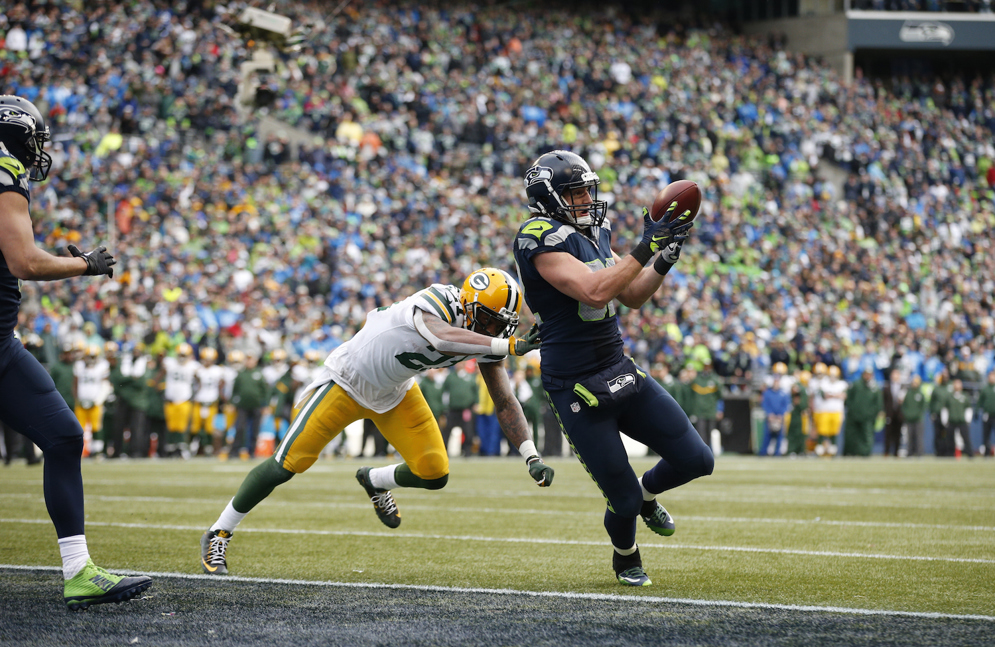Potential Changes to NFL Extra-Point Rules

Seattle Seahawks tight end Luke Willson (82) catches a pass for a two-point conversion during the 2015 NFC Championship game. Changes to PAT rules could encourage teams to go for two more frequently. (AP Photo/Ric Tapia)
When the NFL’s owners, coaches, general managers and league officials gather in San Francisco for the league’s spring meeting on May 19-20, 2015, they will consider changing the rules for the extra-point play.
The three proposals presented by NFL clubs or the NFL Competition Committee at previous meetings are intended to make the point after touchdown (PAT) play more competitive.
As NFL kickers have become more accurate, the extra point has become virtually automatic to the point where it’s sometimes referred to as a “celebration play.” In 2014, NFL kickers converted 99.3 percent of extra-point kick tries.
Here’s a look at the three proposals.
- New England proposes moving the line of scrimmage for PAT kicks back to the 15-yard line to make the extra-point kick plays more competitive.
- The Competition Committee proposes making tries more competitive and incentivize teams to go for two points by moving the line of scrimmage for kicks back to the 15-yard line and by allowing the defense to return missed tries.
- Philadelphia proposes making it even more appealing for teams to go for two by not only moving the line of scrimmage on kicks back to the 15-yard line, but also by moving the line of scrimmage on a 2-point conversion up to the 1-yard line. This proposal would also let the defense return missed tries and it would change the value of a safety scored by the defense on a try from one point to two.
Currently, the line of scrimmage is at the 2-yard line for all PAT tries — kicks or 2-point conversions.
The NFL’s process for modifying or adopting rules and regulations is systematic and consensus-oriented. The process considers input from experts, clubs, players, league committees, the NFL Players Association and others. All proposals that the owners vote on must be approved by 75 percent (24) of the owners to be adopted.
